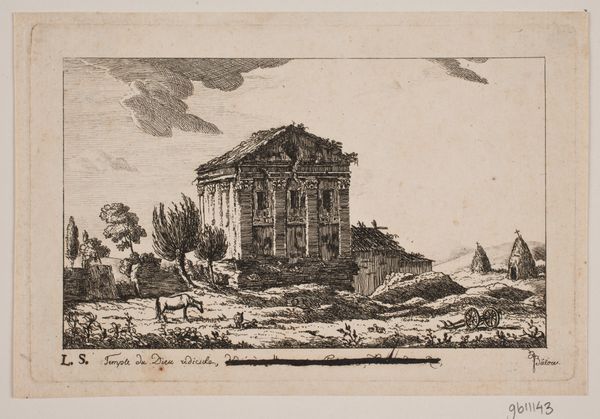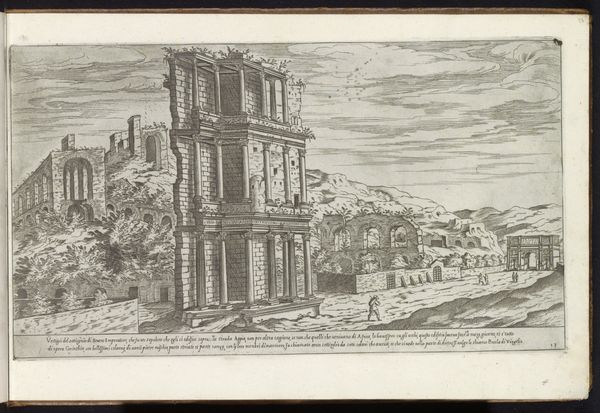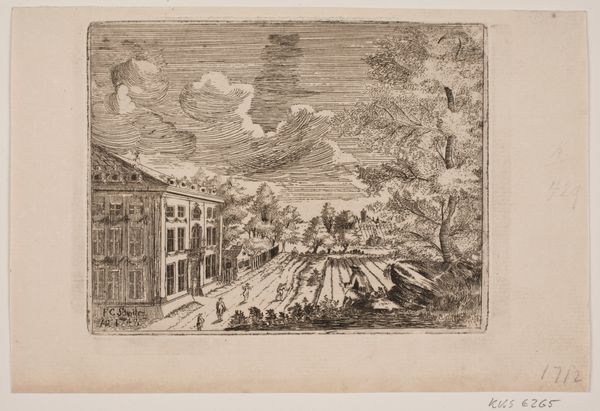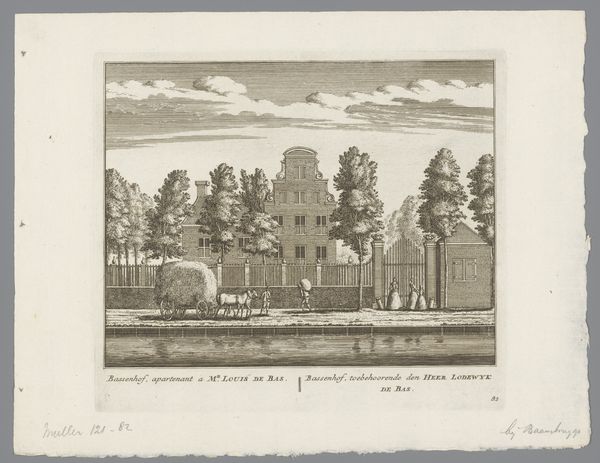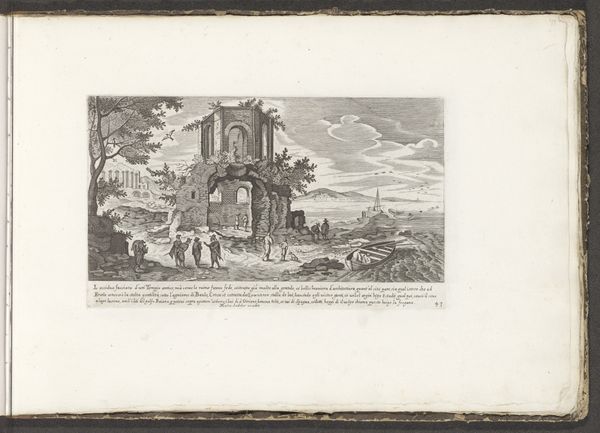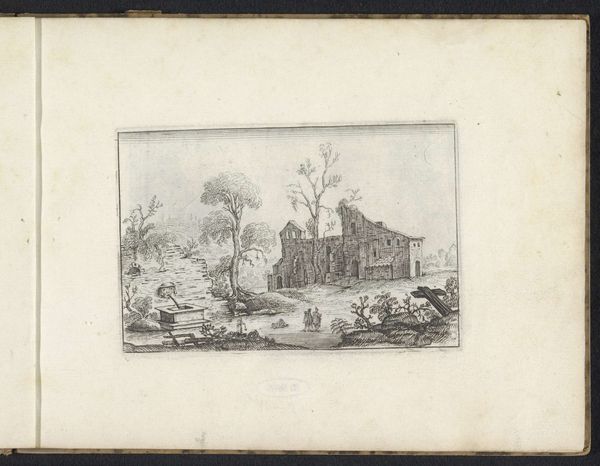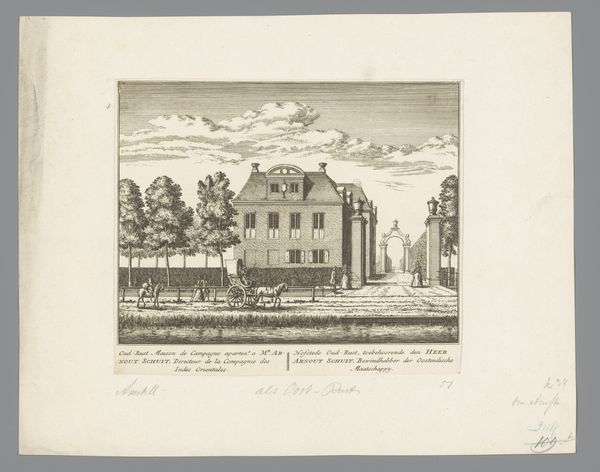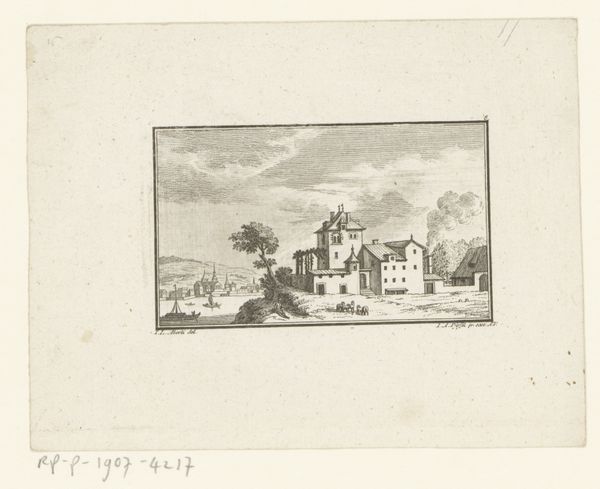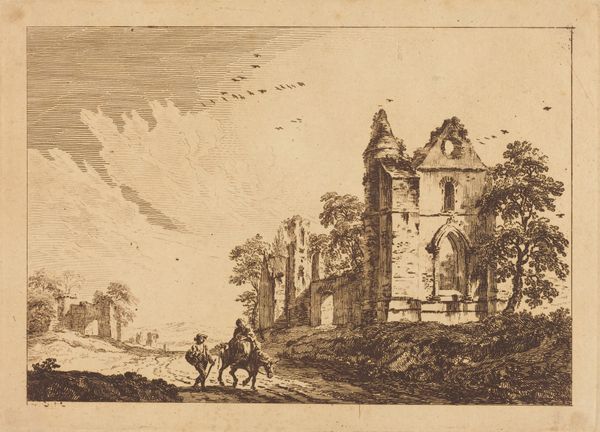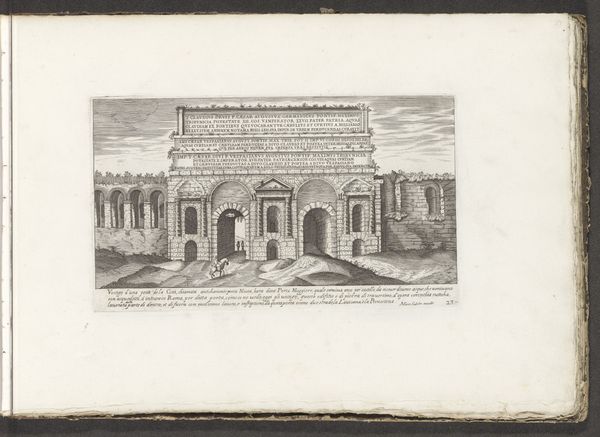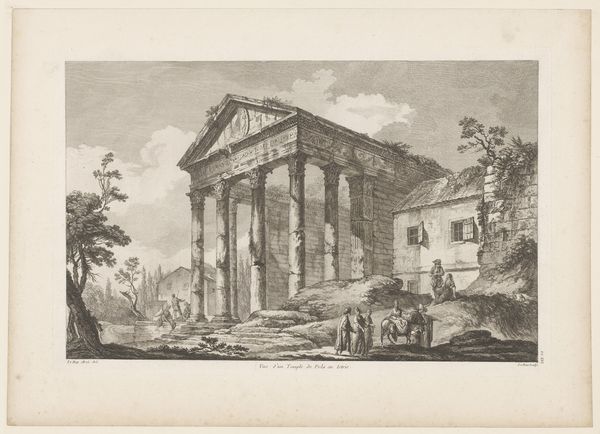
Prometheus steelt het vuur na het boetseren van de mens 1535 - 1604
0:00
0:00
print, etching, engraving
# print
#
etching
#
landscape
#
mannerism
#
history-painting
#
engraving
Dimensions: height 263 mm, width 394 mm
Copyright: Rijks Museum: Open Domain
Editor: Here we have "Prometheus steelt het vuur na het boetseren van de mens", or "Prometheus Stealing Fire After Sculpting Man," an etching and engraving by Étienne Dupérac, created sometime between 1535 and 1604. The scene feels oddly detached, as if classical mythology and ruined architecture exist in separate spheres. What story do you see being told here? Curator: The brilliance of Dupérac here is less about illustrating a literal narrative and more about layering symbols of power and its transgression. Consider Prometheus, a Titan challenging Zeus' authority by gifting fire – knowledge, progress, rebellion – to humanity. Then look at the ruin. Editor: The ruined building, yes... Curator: It isn't just background. It represents the fall of empires, the ephemerality of earthly power. Dupérac might be hinting at a cyclical relationship between progress and decline, inherent in civilization itself. He's also very pointedly placing this mythical narrative *within* the context of a specific place, maybe Rome? Consider what happens when existing political structures – like that of 16th century Europe – are challenged by human curiosity, knowledge, enlightenment. Does the fire threaten existing institutions represented by this ruined structure? Editor: So, you’re saying it's a meditation on the dangers and potential inherent in challenging established power structures? The human cost *and* the creative possibilities? Curator: Precisely. Dupérac uses a classical myth not just as a story, but as a lens through which to examine his contemporary society and how power dynamics shift and shape our world. Editor: I see that contrast between the eternal narrative and the very real-world ruin much clearer now. Curator: That dynamic tension – between the timeless and the timely – makes Dupérac's print so resonant even centuries later.
Comments
No comments
Be the first to comment and join the conversation on the ultimate creative platform.
